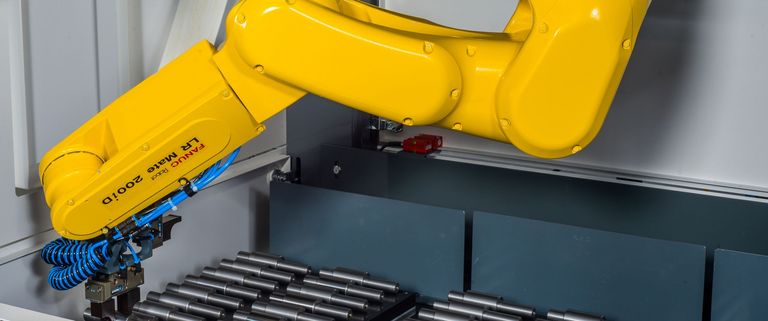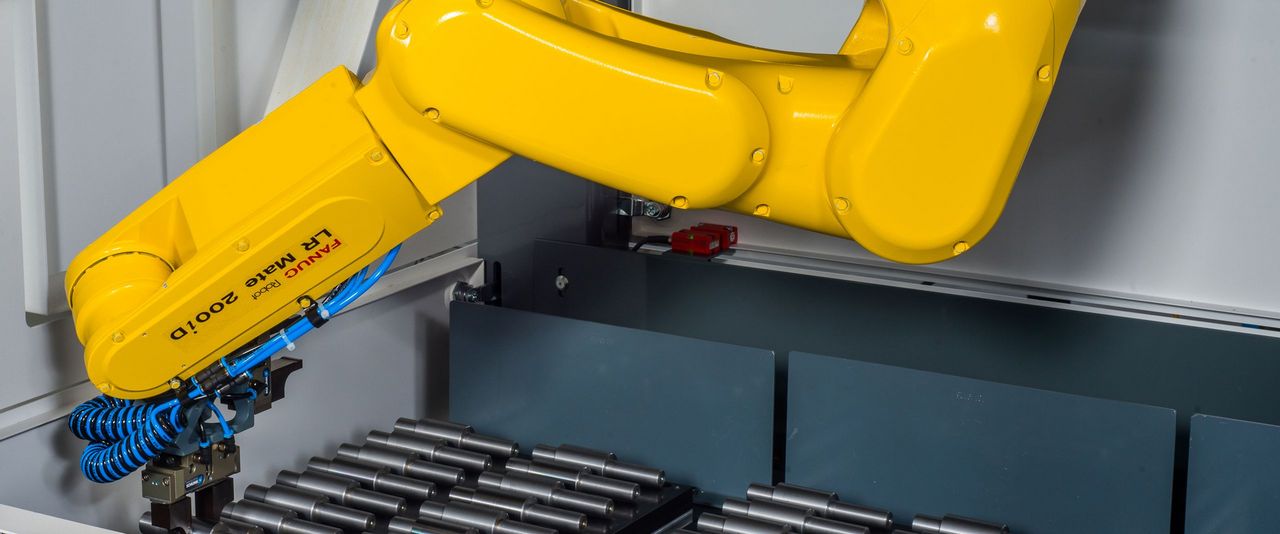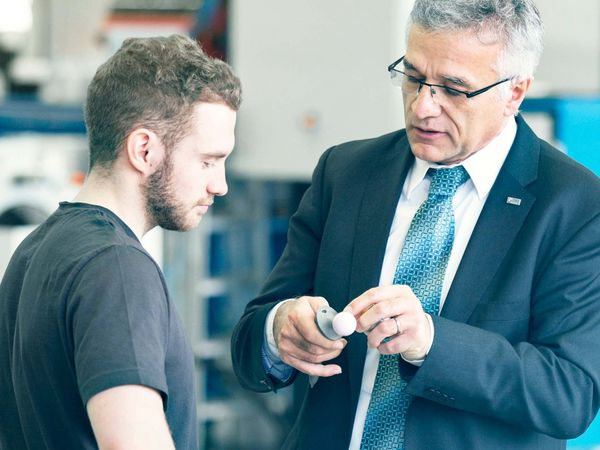Five Ways an Automated Grinding Machines Can Improve ROI
Whether you are considering automating your grinding machine to eliminate inefficiencies in production, running more machines with your existing personnel, or seeking to reduce part costs to retain customers and keep ahead of the competition, the value of automation quickly becomes clear.
Calculations using Robotics Industries Association (RIA) data show that the installation of a $150,000 UNITED GRINDING loading system and tools in the place of an operator for two shifts a day, five days a week, saves over $1.5 million in labor costs over 15 years. The loading system can amortize itself within 18 months
You can determine your own potential ROI by entering your figures into the RIA robot profitability calculator , using variables specifically tailored to your situation.
The automation of grinding offers many direct and indirect advantages. Here are five specific ways an automated grinding machine can deliver a higher ROI.
1. Labor Costs: Reduction of Frequently Recurring Activities
Personnel costs are often underestimated and, in return, investment costs overestimated. But the calculation can work out especially when suitably qualified personnel is hard to find. Robots can take on repetitive and often unsafe manual tasks without the risk of becoming tired - such as loading and unloading, measuring and deburring.
2. Human Capital: Use Your Employees For Higher Value Activities
Deloitte expects around 2 million jobs in the manufacturing industry to remain vacant by 2025 due to the increasing skill gaps. Automation helps mitigate this risk by expanding the skills of the existing workforce.
For example, a STUDER cylindrical grinding machine equipped with a loading system performs over 90 percent of the required work per shift independently. This frees up operators to supervise multiple machines in the production cell, adding value.
Other benefits include:
- The production planning depends on the need for the individual batches and not on how many employees are available for loading a machine. For example, particularly demanding batches can be processed during the day and more automated processes can be carried out in the second or third shift.
- Job roles and responsibilities that involve robotics can also appeal to young people with an interest in technology. You can plot your own growth to match the developing 4.0 industry.
3. Enhanced Productivity: Repeatable Precision Has Many Effects
The secret to automation efficiency lies less in speed than in continuity and consistent quality. Repeatable precision leads to better quality, fewer errors and increased uptime. This ultimately reduces the costs per part.
A variety of innovations in vision systems, bar coding and end-of-arm robot tooling, as well as automatic tool and wheel changers, play a major role in optimizing automated HMLV processes today. Effective management of grippers, trays and pallets, for example, can drastically reduce changeover times.
4. Application Efficiency: Integrating Interfaces With Multiple Components
Grinding automation starts with process optimization and prevents creeping process changes by ensuring a standardized yet versatile and expandable platform.
Many UNITED GRINDING machines are supplied with built-in automation interfaces for loading systems, portal robots, solutions for loading palletized parts, measuring systems and more to support this type of standardization to accommodate changing needs.
Other potential efficiency can be gained through labeling, washing, demagnetizing, deburring, measuring, laser production, re-gripping and more.
Finally, ROI drivers also include material savings through reduced scrap and integration of ERP, SCM and MES software.
5. Capacity Utilization: Energy Efficiency, Less Space Required
Modern automation systems consume less energy through low thermal losses, minimal power consumption and a focus on precise, controlled movements.
Further energy savings can be achieved by reducing idle time and savings from heating and lighting costs without human supervision of production.
Space requirement for production cells can be optimized in a variety of ways, including small footprint loaders, portal loaders or fence-free systems.
The Many Advantages of an Automated Grinding Machine When it Comes to ROI
The many advantages of grinding automation translate into a significant ROI. Despite higher initial costs, a loading system pays for itself very quickly.
Based on this data and growing literature on the benefits of automation for manufacturing, factories that can use automated grinding machines will be more competitive and efficient – regardless of size or industry.











